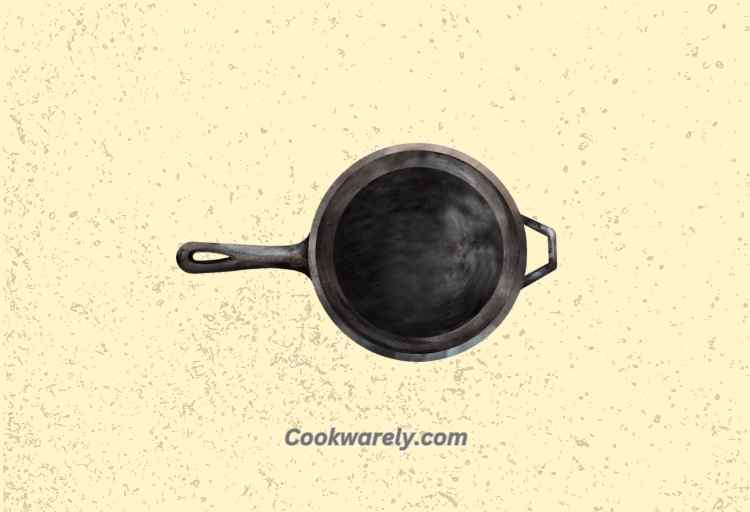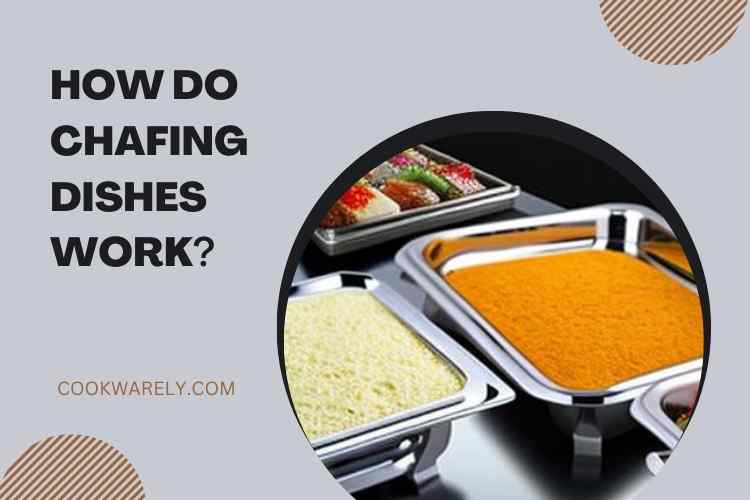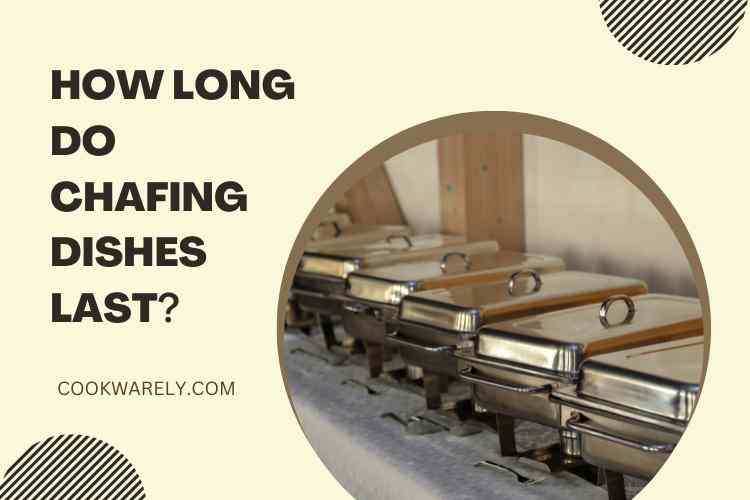How To Tell How Old Is A Cast Iron Skillet? 9 Methods!
Cast iron skillets are timeless kitchen treasures, but have you ever wondered how old your trusty skillet is? Discovering the age of your cast iron cookware can be an exciting journey into its history.
Determining the age of a cast iron skillet involves examining various factors. Look for gate marks, which are indicative of older casting methods. Authentic skillets often feel heavy, bear manufacturer’s markings, show signs of rust, have seamless construction and possess a slightly rough surface texture.
Notable manufacturers like Griswold, Vollrath, and Wagner left distinct marks on their products, aiding in age identification.
Additionally, pattern and model numbers, as well as the presence or absence of markings, contribute to dating.
Research, especially of logos and markings, is essential when seeking to establish the age of a cast iron skillet.
9 Methods To Tell How Old Is A Cast Iron Skillet
| Methods | Description |
|---|---|
| Gate Marks | Look for slash-like marks on the skillet’s bottom, indicating older casting methods. |
| Authenticity Traits | Heavyweight (4-12 lbs) – Manufacturer’s markings – Rust – Seamless construction – Rough surface texture |
| Identifying Brands and Age | Notable manufacturers (Griswold, Vollrath, etc.) Evolution of manufacturer logos – Numbers and letters on handles |
| Pattern and Model Numbers | Check for pattern and model numbers on the skillet’s bottom to determine type, size, and pattern. |
| Unlabeled Cast Iron | Some unmarked skillets can still be valuable; the condition is a key factor. |
| Where to Find Vintage Cast Iron | Sources include yard sales, antique markets, and online platforms. |
| Value of Vintage vs. Modern Cast Iron | Vintage cast iron is valued for craftsmanship and rarity, while modern lacks historical significance. |
| Additional Methods to Determine Age | Texture and weight differences – Other markings (e.g., “Made in the USA”) |
| Manufacturer Logos and Their Significance | Brands like Griswold, Lodge, Vollrath, and BSR have distinct logos and markings. |
Key Takeaways
- Look for slash-like marks on the skillet’s bottom, indicating older casting methods.
- Check for logos and inscriptions that reveal the skillet’s origin and age.
- Differences in surface texture and weight can offer hints about the skillet’s age.

How To Tell How Old Is A Cast Iron Skillet?
1. Gate Marks and Their Significance
If you’re keen to uncover the age of your cast iron skillet, start by examining the bottom. Look for something called a “gate mark.”
These marks, resembling slashes, hold clues to the skillet’s age. They are the remnants of older casting techniques used in the 1800s.
If you spot a gate mark, you’re likely holding a piece of history in your hands.
2. Authenticity Traits
Authentic cast iron skillets have a substantial weight. When you lift one, it should feel notably heavy, usually weighing between 4 to 12 pounds.
This weightiness is a hallmark of true cast iron craftsmanship. So, if your skillet feels sturdy, you might have an old-timer.
Manufacturer’s Markings
Turn your skillet over and inspect the bottom. Genuine cast iron pans often bear a manufacturer’s logo or insignia.
These markings may also include a stock number or the city where it was made. These imprints offer a treasure trove of information, helping you trace the skillet’s origin and age.
The Rust Test
Odd as it may sound, rust can be your ally in dating cast iron. Rust, which is less common in other materials, can be a sign of the skillet’s authenticity.
If you spot some rust, don’t worry—it’s not a bad thing in this case!
Seamless Construction
Authentic cast iron skillets are usually made in one piece, without seams or screw-on handles.
Run your fingers along the edges. If it’s seamlessly crafted, you’re holding a genuine piece of cast iron history.
The Touch Test
The surface of a raw cast iron pan is unique. It’s typically dull black or dark grey and feels slightly rough to the touch. This distinctive texture is another indicator of the skillet’s authenticity.
3. Identifying Brands and Age
Some manufacturers left an indelible mark on the world of cast iron cookware. Brands like Griswold, Vollrath, Wagner Ware, Favourite, Atlanta Stove Works, and Wapak produced high-quality vintage pieces. If you find one of these names on your skillet, it’s likely to be an antique.
Logo Evolution
Manufacturer logos and labels can provide invaluable clues about your skillet’s age.
These logos evolved over time, so variations can help you pinpoint when your cast iron treasure was made.
Numbers and Letters
Be cautious about numbers stamped on handles. Historically, these numbers referred to compatibility with specific wood stoves rather than the pan’s size in inches.
However, specific numbers and letters can indicate rarity and value.
4. Pattern and Model Numbers
Vintage cast iron cookware often boasts pattern and model numbers on the bottom.
These numbers vary between manufacturers and unveil details about the skillet’s type, size, and pattern. Consult these numbers to dig deeper into your skillet’s history.
5. Unlabeled Cast Iron
Some vintage cast iron pieces bear no distinct branding, making them intriguing mysteries.
However, don’t underestimate them—unmarked skillets can still be of high quality and value. Remember, the condition plays a crucial role in determining their worth.
Where to Find Vintage Cast Iron
If you’re eager to start your cast iron treasure hunt, you can find vintage pieces at yard sales, antique markets, and online platforms like eBay and Etsy.
But remember, thorough research is your best friend when it comes to collecting vintage cast iron. Knowledge is power!
Value of Vintage vs. Modern Cast Iron
Vintage cast iron holds a special place in the hearts of collectors and enthusiasts. Its craftsmanship and rarity make it highly valued. In contrast, modern cast iron is readily available but lacks the historical significance and uniqueness of vintage pieces.
Additional Methods to Determine Age
Texture and Weight as Age Indicators
Beyond gate marks and manufacturer markings, you can also gauge the age of your cast iron skillet through its texture and weight.
Older pans often have a smoother surface, while newer ones may sport a thicker, pebbled texture.
Additionally, older skillets tend to have thinner walls compared to their more recent, heavier counterparts.
Markings Matter
Keep an eye out for additional markings on your skillet. Gate marks, “Made in the USA” inscriptions, and specific manufacturer logos can all provide valuable information about your skillet’s age and origin.
Manufacturer Logos and Their Significance
The Griswold Legacy
Griswold Manufacturing Company, known for its high-quality skillets, used various markings during different eras.
Look for names like “ERIE,” “ERIE Spider Skillet,” and “Iron Mountain Skillets” to determine the age of your Griswold piece.
Other Notable Manufacturers
Lodge skillets with notches in the heat ring date back to the 1930s, while those with “Made in USA” text are from the 1960s. Blacklock Foundry, a precursor to Lodge, made skillets in the late 1800s to early 1900s.
Vollrath skillets may have the company name or underlined numbers and were produced from the 1930s to the 1940s. BSR (Birmingham, Stove, and Range Company) skillets have unique features like a ridge under the handle, and their production spanned from 1957 to 1993.
Subcategories include “Red Mountain” from the 1930s and 1940s and “Century” from the 1950s.
Conclusion
Determining the age of a cast iron skillet involves a fascinating journey through its history.
By examining gate marks, assessing authenticity traits, recognizing manufacturer logos, and exploring additional methods, enthusiasts and collectors can unlock the secrets of these timeless kitchen treasures.
Whether you’re seeking to date a cherished heirloom or starting your cast iron collection, these methods offer valuable insights into the age and authenticity of these enduring culinary companions.






